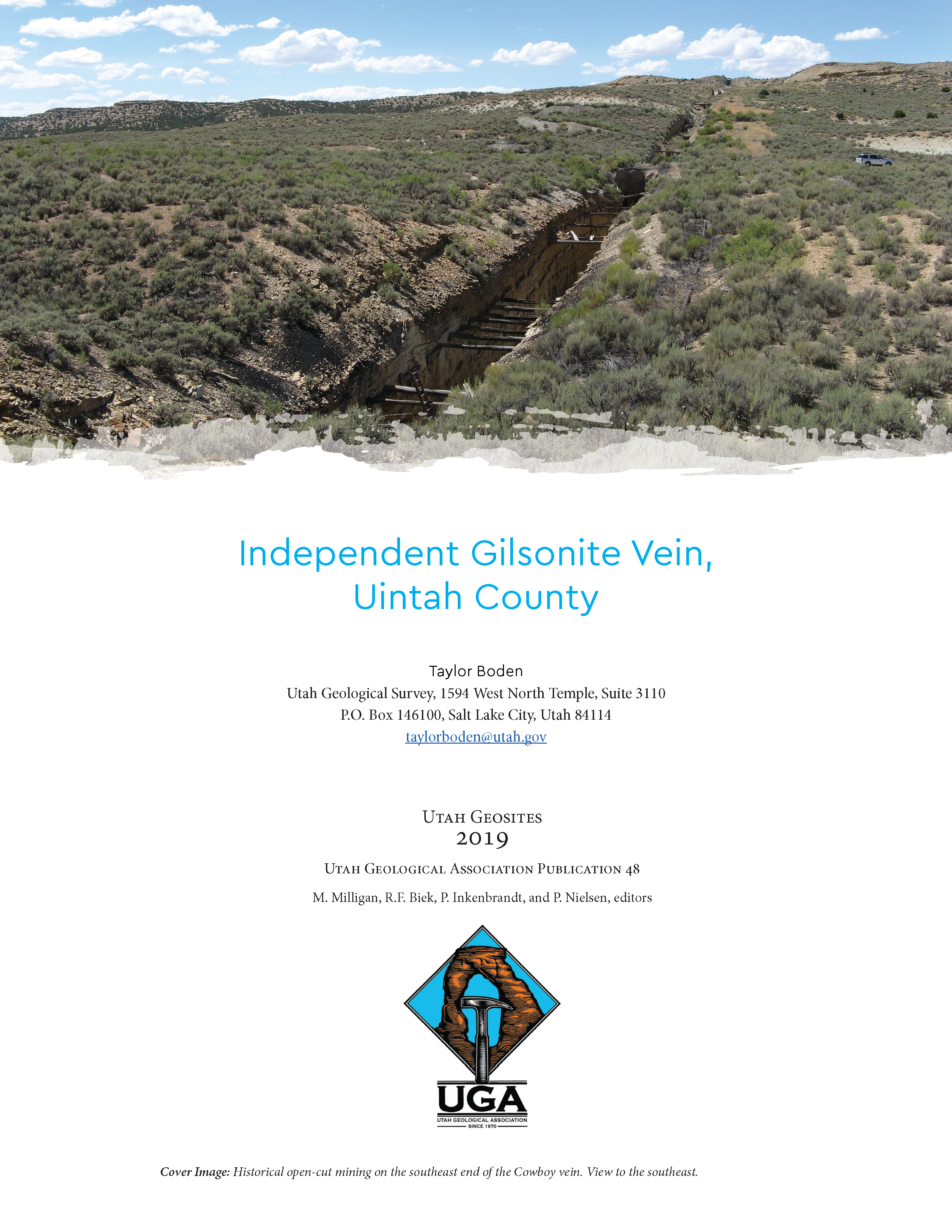Independent gilsonite vein, Uintah County
Abstract
The Uinta Basin of northeastern Utah contains a wide variety of hydrocarbon resources including vast accumulations of crude oil and natural gas deposits, one of the largest oil shale resources in the world, and the largest tar sand deposit in the United States. In addition, unique solid hydrocarbons, including gilsonite, wurtzilite, tabbyite, and ozokerite, have a long and colorful history of exploration and/or production in the region. The most abundant of these, gilsonite, occurs in distinctive swarms of subparallel, northwest-trending veins. The lateral continuity of the veins is impressive, with relatively long, straight ribbons stretching across the hills of the eastern Uinta Basin. The veins are also vertically continuous, extending hundreds to more than 3000 feet (900 m) below the ground, commonly having only small variations in width. The Uinta Basin contains the world’s largest deposit of gilsonite and is the only place in the world where this unique resource is economically produced. Gilsonite is remarkable for its unusual geologic origin, chemical and physical properties, and industrial uses. Industry pioneers are noted for creating innovative uses for their product and for over 100 years have solved mining, processing, transportation, marketing, and other challenges to supply gilsonite to world markets. Accordingly, gilsonite has been studied and described in a large body of research dating back to the 1880s. Most recently, the Utah Geological Survey (UGS) published Special Study 141 (Boden and Tripp, 2012), which presents the latest mapping of gilsonite deposits and a compilation of existing data. To date, over 70 significant veins and vein systems, having a total combined vein length of over 170 miles (270 km), have been mapped by UGS geologists.

Copyright (c) 2019 Utah Geological Association

This work is licensed under a Creative Commons Attribution 4.0 International License.

